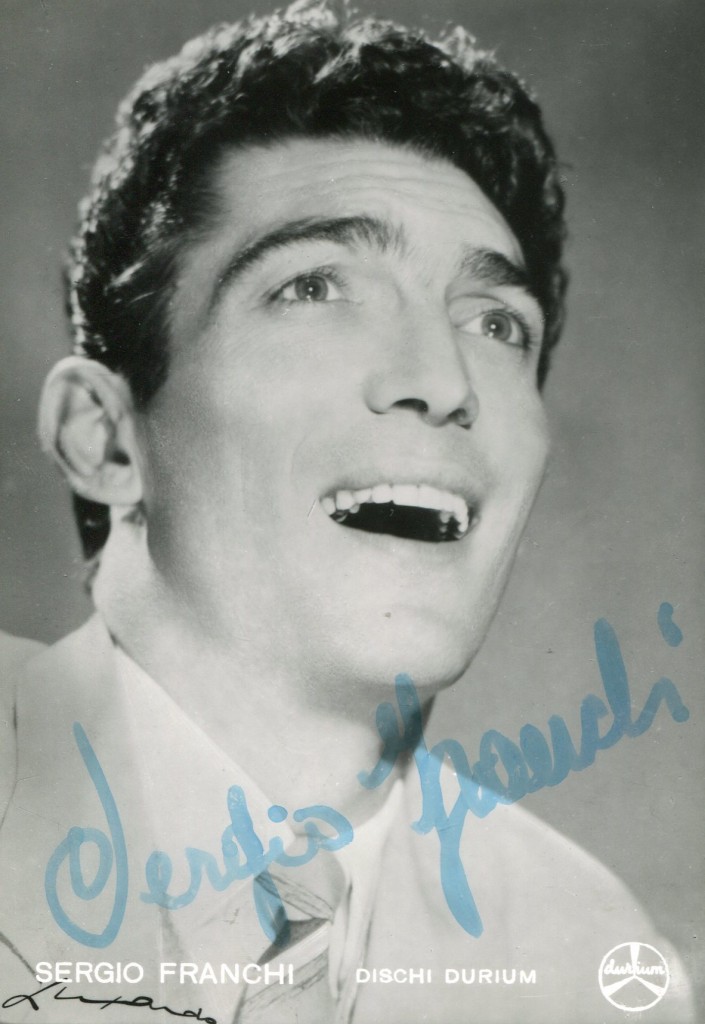
Sergio Franchi (Wikipedia)
Sergio Franchi was an Italian-American tenor and actor who enjoyed success in the United States and internationally after gaining notice in Britain in the early 1960s. In 1962, RCA Victor signed him to a seven-year contract and in October of that year Franchi appeared on The Ed Sullivan Show and performed at Carnegie Hall. Sol Hurok managed Franchi’s initial American concert tour.
Franchi became a headliner in Las Vegas, and starred in concerts and cabarets on several continents. His earliest ambitions and studies had been directed toward an operatic career, but he instead found his niche in popular and romantic music. Franchi performed musical comedies on stage, appeared on numerous television variety shows, and starred in a major motion picture. He became an American citizen in 1972. After gaining success, Franchi was a benefactor and philanthropist, donating his time and talent to many causes. For his longtime support of Boys’ and Girls’ Towns of Italy, he was posthumously awarded the title of cavaliere in the Order of Merit (Stella al merito del lavoro) by the Italian Government.
Sergio was one of three children born to a Neapolitan father and Ligurian (Genoa) mother. Sergio, Mirella, and Fausta (born 17 years after the older two) were all born in the Lombardy District. This includes Milan, Cremona, and the smaller village of Codogno – where he was born. Some geographical over-simplifications resulted in listing Sergio’s birthplace as Cremona, and Fausta’s (Dana Valery) birthplace as “near Milan.” Because the family also lived in Cremona, Franchi called both Codogno and Cremona his “hometown” at different periods in his life. Sergio Franchi stated for the record several times in later life that his birthplace was Codogno in the province of Lodi, An uncle who owned a vineyard in Alassio (near Sanremo on the Italian Riviera) was instrumental in family life on various occasions.
As a child, Sergio sang for the family with his father, who played the piano and guitar. At age ten, he sang a comic role as a hunchback in a school play.[1] Young Franchi formed a three-piece band at age sixteen to earn pocket money, and then later sang with a male vocal group in local jazz clubs. But, in spite of his musical talents, he soon followed his father’s wishes that he pursue a career in engineering. Franchi pursued, but did not finish this training. The senior Galli had been a successful businessman who owned several shops, but lost all of his assets during World War II and the German occupation. After the war, he became friendly with a Captain in the South African medical corps who was stationed nearby. He soon followed the officer’s suggestion that South Africa would be a land of more opportunity, and he immigrated to Johannesburg. The family followed in 1947 (Fausta was four years old). when Sergio completed his compulsory military service at age twenty-one.
When the family arrived in Johannesburg, they found that the senior Galli (skillful as a craftsman in wood) had established a successful furniture factory.[2] Young Sergio Galli began using his skills as an architectural draftsman and worked for his father as a designer of commercial and industrial interiors. He also began singing in informal concerts of Italian music. His powerful and exceptional voice attracted growing attention; hearing him sing, one of the principals of the Johannesburg Operatic and Dramatic Society (JODS) tracked him down and offered him the leading role in The Gypsy Baron. (Franchi’s sister Dana Valery played one of the children in this 1953 production.) Speaking little English at the time, he learned the role phonetically. Franchi’s enthusiastically received debut was followed by leading roles in Pink Champagne (Die Fledermaus in English)(1953), The New Moon (1954), and The Vagabond King (1955). Johannesburg’s once-thriving local opera season had collapsed after WWII, and it was not possible at this time to earn a full-time wage as a singer.
Alessandro Rota, a successful operatic tenor in the Southern Hemisphere, came from Cape Town to Johannesburg in 1955 and helped form The National Opera Association. Rota began making a difference by producing operatic concerts, full acts from operas, and then full opera productions. Under Rota’s tutelage, Sergio Galli’s voice matured, and he expanded his vocal range and technique. About his first experience with the fledgling opera company in a production of Carmen, Franchi later stated this initial experience in opera was a disaster: He sang the tenor part in Italian, the baritone sang in Russian, but the soprano could sing her role in French![3] But the company quickly matured and Rota placed Franchi in leading tenor roles in at least two successful full opera productions – Puccini’s Madama Butterfly in 1957, and then Verdi’s La traviata in 1959. Some references also list Sergio Franchi singing lead performances in Verdi’s Rigoletto and Puccini’s La boheme.
Sometime after the 1956 London production of Grab Me a Gondola premiered, Franchi performed in a Johannesburg stage production of the musical, and made his very first recording with the cast.
With these years of performing experiences, and aspiring to a career in opera, Franchi returned to Italy for further opportunities and operatic studies. While on a performing tour of South Africa, Beniamino Gigli had heard Franchi sing and had encouraged him and his family in this regard.[8] During 1959 Franchi made an important contact with an English agent, James Gilmore, who encouraged Franchi to meet with him if he came to London.
Leaving for Italy in 1959, Franchi scored some early successes. He was among the 10 finalists in a La Scala competition with 250 other singers.[19] He was offered the role of Cavaradossi in Tosca, which he played in a minor opera house. Looking back in 1983 about hoping to make it in Italian opera, Franchi stated that he didn’t think he was in his right mind: “I was a dreamer.” At the time, all seemed bright, so he sent for his wife and children. Suddenly, there was no more work, and within a year Franchi was broke.[7]
A Canadian newspaper summarized this period by stating that “Good things started to happen, but only after the door-knocking and counting pennies routine.” This was a very difficult period in the Franchi family’s life. With his Italian passport, (and his English-speaking wife and children on South African passports), the family was separated while he looked for work in Italy. So, from his Italian base in Milan and Alassio, He began recording with Durium Records for the popular market.. having hits with “Amore mio” and “I tuoi occhi verde.” An album of Italian songs and several EPs and singles in Italy, London, and Canada followed. [After his initial success in America, these recordings were released on five LP albums available for American audiences.] As a result of his personal appearances and recordings, Sergio Franchi was drawing enough attention in musical circles that his activity was being tracked on Billboard. Early in 1960 Franchi had played the role of Janni in the short-lived London production of The Golden Touch. His singing performance received favorable reviews. His London agent, James Gilmore, arranged several TV appearances for Franchi, and that work (and changes in South Africa’s status as a Republic) allowed him to return to his family in London.
Franchi made several appearances on ATV’s Startime. Then, during a two-week engagement at the London Palladium, Franchi made two TV appearances on Sunday Night at the London Palladium; a show that launched the career of many performers, and the most popular TV show in Britain.[25] Franchi’s second Palladium TV show was a breakthrough performance, in that it led to a cascade of events which catapulted Sergio Franchi into American stardom. Viewing his performance that night was Norman Luboff, who called RCA Victor about the Italian tenor. An audition was arranged via two taped selections sent to New York.[citation needed]
With RCA approval, Luboff facilitated Franchi’s signature on an exclusive seven-year recording contract. RCA Victor issued his records on the prestigious Red Seal label. Sol Hurok was engaged to provide bookings and direction for an American tour, and (while in London) Franchi recorded his first RCA Victor album– Romantic Italian Songs, to be released concurrent with his American debut.
Ready to begin his tour, Sergio Franchi arrived in New York on September 25, 1962, and RCA Victor had already begun an all-out saturation campaign to launch his American career. Concurrent with the release of his debut album, RCA provided the industry introductions in Boston, Philadelphia, Chicago, Cleveland, and New York. His album was also advertised extensively. Sergio Franchi made his American television debut with an appearance on The Ed Sullivan Show on October 14, 1962; and his Sol Hurok concert debut at Carnegie Hall on October 21, 1962. Singing the whole concert without a microphone, a New York reviewer commented favorably upon Franchi’s “big, healthy voice”, his penchant for ad-libbing, and upon Franchi’s ability to establish instant rapport with his audience.

Ed Sullivan was in the audience that night and soon contracted for future Franchi appearances—including a second TV appearance on his show the following week (October 28, 1962). [Sergio Franchi went on to become one of Ed Sullivan’s “two or three most favorite guests,” with 24 appearances]. Within a week of these initial debut appearances, the feedback on sales of Franchi’s first LP album proved most pleasing to RCA Victor, the album was listed as a Favorite Album by Mr. Pop History (a 60s pop-culture magazine); and it peaked on the Billboard 200 at number 17 at the end of December. The year was concluded with successful concert appearances in Washington, D.C.’s Constitution Hall, and in Boston’s Music Hall…where he played to packed audiences (capacity 3,600) for four days—-two shows per night.
Sergio Franchi made his nightclub debut at the Empire Room of the Waldorf-Astoria in New York City. While he was there he met Metropolitan Opera soprano Anna Moffo, with whom he was to collaborate on two albums that year. Franchi’s next appearance was at Miami’s Eden Roc Hotel in a double-billing with Barbra Streisand, and an American Cancer Society benefit at the Paramount Theaterin West Palm Beach hosted by Bob Hope.[40] Next, he traveled to Chicago for a concert debut at the Palmer House Empire Room.[41] Two more Ed Sullivan appearances facilitated national exposure, and Franchi made his Nevada casino debut starring in The International Follies at the Nugget Circus Room in Sparks, Nevada.
He made his Las Vegas debut at the Sahara Hotel as the opening act for Bob Newhart. These successful performances were interspersed with three European events: one to appear in a German television production in Austria (recorded on the 1963 DVD, Sing, aber spiel nicht mit mir); another trip to Vienna to collaborate with Anna Moffo for Franchi’s only opera recording, The Great Moments from Die Fledermaus (released in 1964); and a trip to London to record another album with Wally Stott, Women in My Life (1964). Franchi recorded three more albums for RCA Victor released in 1963: Our Man from Italy, The Dream Duet and Broadway, I Love You. All three of these Red Seal albums peaked on the Billboard 200 pop charts in 1963. His debut album, Romantic Italian Songs continued on the Billboard 200; He completed the year as the opening act for Juliet Prowse in an acclaimed performance at the Cocoanut Grove—Los Angeles’ most opulent supper club.
Sergio Franchi’s February 1964 appearance at the Sahara Hotel in Las Vegas attracted the attention of Time magazine, as his performance eclipsed that of the star performer, and “he kept getting standing ovations and multiple encores.” Time magazine called him the “new favorite son of Las Vegas.”[47] Franchi’s talents in singing, dancing, and comedy were prominently featured on six television specials: with “Victor Borge at Carnegie Hall” (“the evening’s major hit”), Meredith Willson‘s Texaco Star Parade special. a Bob Hope Chrysler Special (Franchi “stole the show right out from under me!”) and three appearances on The Hollywood Palace. Franchi teamed with Jimmy Durante‘s troupe for a tour of the Northwest, with appearances in Portland, Seattle, and Vancouver, B.C. Sergio Franchi made a noteworthy appearance at the “35th Annual Chicagoland Music Festival” in August 1964, with an audience of 56,000 at Soldier Field.[53]Sergio Franchi’s year was capped with a starring performance at the Cocoanut Grove, (where he recorded his Sergio Franchi – Live! at The Cocoanut Grove album on October 15, 1964). and a headlining return to Las Vegas at the Sahara Hotel with Phil Silvers.
1964 was an important year for Franchi for other professional and personal reasons. In a decisive move towards attracting a more mainstream pop audience, RCA Victor switched Franchi from the Red Seal to their standard black label (issuing The Exciting Voice of Sergio Franchi album), and Sergio Franchi changed his professional representation to the William Morris Agency. Although he had already received offers to star in several films, Franchi did not find a role he wished to play for a few more years. Confident of his new successes, Franchi moved his family from London to a Park Avenue apartment in New York City, filed the first papers in declaration of his intent to become an American citizen, and successfully concluded negotiations for a role in a Broadway musical.
It was Meredith Willson who initially brought Sergio Franchi’s name and talents to the attention of Richard Rodgers when he was casting the leading role of the romantic Venetian shopkeeper, Renato Di Rossi.[60] But, as pointed out in a Billboard Magazine article, a successful show-business personality like Sergio Franchi was taking on a new importance for Broadway…especially in selling blocks of theater party tickets. (Regarding the financing for “Waltz;” Richard Rodgers provided $450,000 and Columbia Records provided about $105,640 of initial financing. Advance ticket sales of $900,000 indicated a lengthy run despite mixed reviews.) Franchi liked the score and embraced the idea starring in a Richard Rodgers production, although it meant giving up a large portion of a year’s income from his concert dates. Rehearsals started on January 25, and the Broadway show was the focus of Franchi’s endeavors until the musical closed on September 25, 1965. Rodgers wrote the song “Bargaining” especially to showcase Franchi’s vocal dexterity and to provide comic relief in the score. Having made his mark on Broadway with acclaim for his vocal performance (and some positive ones for his acting). the demand for Sergio Franchi appearances continued strong in 1965…with performances at the Congressional Club‘s huge annual luncheon honoring the First Lady; a televised Madison Square Gardens benefit; a United Nations delegates concert;[66] and continued activity in recording albums and singles for RCA Victor.
1965 was a very big year for Franchi in terms of notable albums. RCA Victor allowed Franchi to appear on the Columbia Records cast album of Do I Hear a Waltz?; his Live! at the Cocoanut Grove album was released early in the year; he recorded The Songs of Richard Rodgers; and he recorded his evergreen Christmas album The Heart of Christmas (Cuor’ Di Natale). Franchi’s Live! and Christmas albums both peaked on the Billboard 200. Capitalizing on Franchi’s popularity, four albums of the Durium recordings he made in Europe were also released this year. Franchi also recorded two singles in 1965: one containing two selections from “Waltz,” and “Moon Over Naples.” For all of his successes with his albums, Sergio Franchi never had a “hit single,” and at least one reviewer stated that Franchi “was in need of better material” for the singles market.[67] RCA Victor appeared happy to have a successful album artist, and used their Franchi album emphasis when signing other artists (e.g. John Gary and, in terms of country music, Eddy Arnold). There is some anecdotal evidence that Franchi wished to have more influence on musical choices for his singles recordings. He had heard a Bert Kaempfert tune and asked to record it. The lyrics for “Moon Over Naples” were then written by Charlie Singleton. When this Franchi single did not take off right away, it was re-written as “Blue Spanish Eyes,” but given to another artist. Franchi was very upset over this turn of affairs, and did not record another single for RCA Victor for at least a year.
Over the next several years, Franchi’s career shifted into high-gear with a packed schedule of memorable concert bookings. He did take time out in 1966 to welcome his sister, Dana Valery, to the States and catch her acclaimed Broadway performance in “Wait a Minim!” On the casino circuit, Franchi appeared in Las Vegas in a series of three Sahara Hotel bookings (usually 3–4 weeks each) opening for Buddy Hackett and a gig at the Nugget Circus Room in Sparks with the Osmond Brothers opening for him (Franchi now called “one of the world’s top entertainers”). He also starred in notable return engagements at the Copacabana, and at the Plaza Hotel Persian Room in New York; a debut with packed performances at the Century Plaza Hotel‘s Westside Room (with Phil Silvers) in Los Angeles; his debut at the Fairmont San Francisco Hotel; and several weeks at The Roosevelt New Orleans HotelBlue Room Gala Reopening.
On the International scene, Sergio Franchi was a regular annual performer for about a decade at the El San Juan Hotel in Puerto Rico during their high winter season; and he made several Centennial-related concert dates in Canada. including the televised CBC Centennial International series.
At the start of his popular annual appearances at Palumbos in Philadelphia, he received a standing ovation before he sang a single note. In April 1968 he was the featured guest at the 78th Annual Sveas Soner (“sons of Sweden”) Men’s Chorus Concert in Rockford, IL. His performance garnered front-page coverage. In spite of a crowded schedule, Franchi found time to continue appearances on The Ed Sullivan Show, The Hollywood Palace, The Tonight Show, and other television specials.
In 1963 (noting that RCA Victor received as much fan mail for Mario Lanza as for Elvis Presley), Franchi turned down an offer from Metro-Goldwyn-Mayer to star in a film on Lanza’s life story. Hedda Hopper quoted him as saying “If I did it well, I’d always be remembered as the man who played Lanza. If I didn’t do it well, heaven help me.” In 1968, he accepted a non-singing, supportive role in United Artists‘ The Secret of Santa Vittoria, starring Anthony Quinn and Anna Magnani, but soon tired of all the waiting around. He stated he preferred performing on Broadway, where each night is different and a challenge to make it new. Stanley Kramer was delighted by Franchi’s performance, and stated that Franchi “went from slick nightclub performer to peasant beautifully.” Franchi also starred in the film’s soundtrack recording singing the title song, “The Song of Santa Vittoria (Stay),” which was nominated for a Golden Globe Award for Best Original Song.
After his Broadway role in Waltz, Franchi continued to be considered for new roles on stage; but his return to Broadway was more than a decade away. He had recorded several more albums for RCA Victor: From Sergio – with Love, and There Goes My Heart in 1967; I’m a Fool to Want You and Wine and Song in 1968. However, Franchi did not renew his contract with RCA in 1969: he signed instead with United Artists Records, with whom he had made the soundtrack recording The Secret of Santa Vittoria. Then later (in 1971), he signed his next recording contract with Metromedia.
As the recording industry increasingly came to be dominated by the tastes of a younger generation, Franchi and many his contemporaries found their most popular reception in supper clubs. In 1969, Franchi moved his family residence to Las Vegas, where many great popular singers of his generation were in demand.
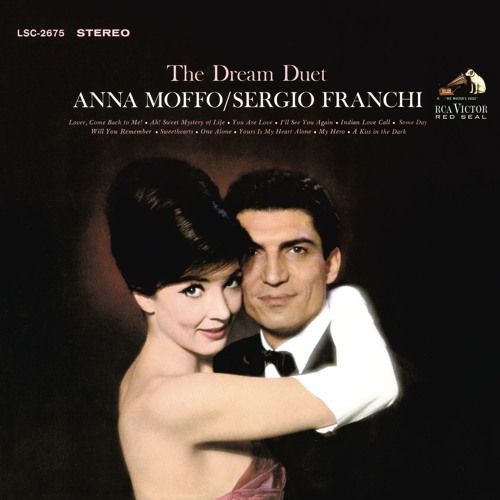
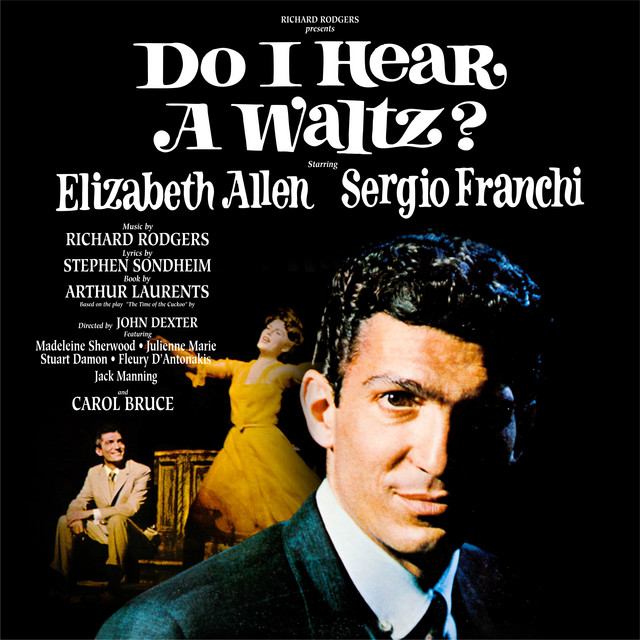


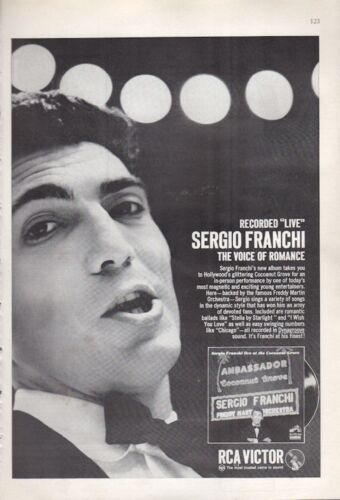
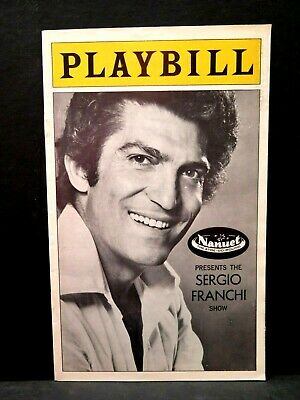


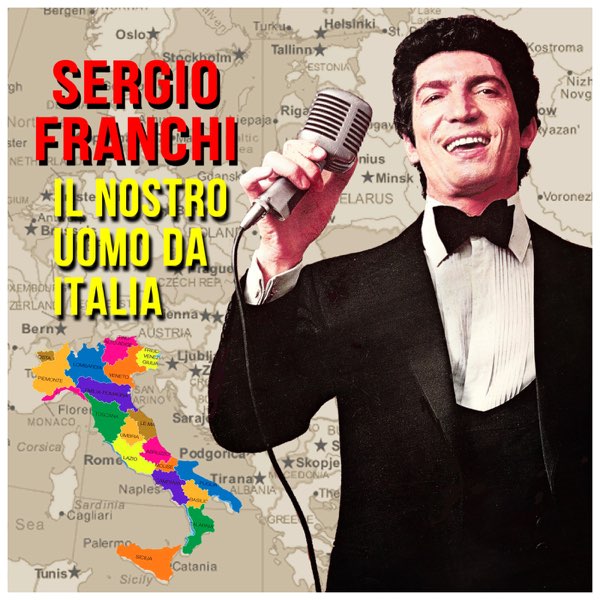

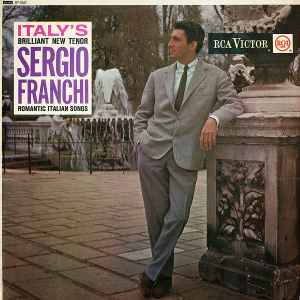


During the 1970s, gambling was not the main attraction in Vegas. With the collapse of the musical comedy genre in movies, and the dominance of the younger generation in the recording industry—Las Vegas became a prime vacation destination for entertainment, and the place to catch a live performance of your favorite star. Italian-Americans entertainers were well represented, and Sergio Franchi was one of the most prominent headliners. Franchi began his Las Vegas association with the Flamingo Hotel in a November 1968 booking with Hines, Hines, and Dad. Sergio Franchi and Pat Cooper became a memorable duo with their unique blend of humor and Franchi’s singing, and they were booked together intermittently through to the end of Franchi’s life. After their 1969 SRO booking at the Flamingo Hotel, both Franchi and Pat Cooper were earning $25,000 a week. In 1970 Franchi was voted Best Male Vocalist by Fabulous Las Vegas Magazine.(Barbra Streisand was voted Best Female Vocalist.). In 1971, he signed a three-year contract with the Flamingo Hotel and appeared there regularly until the end of 1973.
He also worked bookings at Harrah’s Reno Headliner Room in 1972 and in 1973. By 1972, Franchi had become a United States citizen, and by 1973, his business manager reported Franchi had hit the 7-figure income category.
Franchi’s biggest Las Vegas booking success occurred at the end of 1973. When the MGM Grand Hotel and Casino (at that time the largest resort hotel in the world) opened at the end of 1973, Franchi was the first star that was signed… an exclusive three-year contract to begin in February 1974. His salary was more than twice what he had earned at the Flamingo Hotel (around $220K monthly).
After returning from Italy, Franchi returned to his cabaret performances with a big honor: His friend Anthony Quinn (who reportedly had not been in a night-club for years) flew with his wife from Rome to introduce Franchi at one of his popular Coconut Grove openings (Dana Valery opened for him) on February 25, 1969. Franchi returned to the Americana Royal Box in a “record-setting” month in April, 1969. and appeared at the Fairmont Venetian Room in Dallas, TX in May. A familiar face in Chicago, in July 1970 Sergio Franchi began almost a decade of annual performances at the Mill Run Playhouse; this time with Joan Rivers as his opening act; and, in 1975, with sister Dana Valery.
In October 1970 Franchi did a whirlwind 21 cities tour beginning at the Saskatchewan Centre of Arts in Canada. After a 10-year absence, Franchi returned to London for three weeks in 1972 at The Talk of the Town. Critics said “We should never have allowed Franchi to be exported.” Franchi also had the opportunity to perform with the man who was responsible for discovering him, a.k.a. the Norman Luboff Choir on November 16, 1974 for the closing performance at Augusta, GA’s Famous Artist Series. In 1976, Franchi also took the opportunity to take his MGM Grand Show on the road in 1976 to perform with Valery at the new 2,900-seat Film Trust Arena in Johannesburg, South Africa (December 23, 1976 to January 1, 1977).
The summer of 1969 was auspicious for Franchi fans in the when he launched one of the first of his perennial favorite appearances on the summer circuit concert agenda in the Eastern states. organized most of his summer appearances as The Sergio Franchi Show with a line-up of memorable co-stars and leading acts. These were very popular record-setting shows (in some cases, seven to ten days to accommodate demand). These concerts continued to be an important part of his professional life over the next two decades. In 1975 Sergio and Dana’s 72-year-old father flew in from South Africa to watch his famous children perform at the Westbury Music Fair.
During the 1970s, Sergio Franchi continued to receive national exposure through his television appearances; but his most intensive exposure was through his role as the television spokesman for Chrysler Corporation. Chrysler embarked upon the “most extensive ad campaign for a new car line” in their history for the introduction of the Plymouth Volare; (Franchi was closely identified with the song, “Volare,” which he had recorded ten years earlier) and Franchi was given due credit for making the advertising campaign memorable. While Franchi never revealed the remuneration he received for any of his endeavors, a 1976 article states that celebrities like Franchi were receiving compensation of up to $250k per year for their endorsements. In the recording department, Franchi recorded three new albums…one released through Dynamic House/TeleHouse (formerly part of Decca) which was marketed extensively on American TV; a similar one released by DynaHouse for the Australian market; and his Con Amore Sergio album. Recognition also came from an ironically unexpected direction when, in 1975, Sergio Franchi was the honored recipient of The Mario Lanza Award for outstanding achievements in the field of music. Although the critics may have compared and contrasted the similarities and differences in Lanza’s and Franchi’s styles, the public had no such problems in recognizing the appeal and greatness in the voices of both singers.
1977-78 were not particularly good years for Sergio Franchi. He had to cancel a Cleveland appearance scheduled for April 1977 because of medical treatment in New York; and underwent a subsequent surgery in Los Angeles. Franchi returned to performing in the July–October “straw-hat circuit”, and then sang in the month of November for Boys Towns’ benefits in Pittsburgh and New Orleans. RCA released a 1977 compilation album celebrating the 15th Anniversary of their contract with Franchi– Sergio Franchi/Volare. 1978 was full of changes, and reduced performance activity. His appearances included Vegas at the Sands Hotel, and then with Dana Valery at Chicago’s Mill Run Theater in May, 1978 to a rare, mildly negative review. He canceled an August date for Storrowton, but appeared at the Frontier Hotel in September; at Harrah’s Reno in October; then performed at Stanbaugh Auditorium in Ohio in November 1978. Franchi performed in Las Vegas during the first five months of 1979, but did not return until 1982: In January he was engaged at the Frontier Hotel, and at the Sands Hotel in February (both with Nipsey Russell). He appeared in March at the Desert Inn; and returned to the Frontier Hotel in May with Dana Valery & Nipsey Russell. In the second half of 1979, Franchi performed his usual summer circuit, and appeared at Chicago’s Mill Run Playhouse; and then back to the Front Row theater for a week with Dana Valery & comedian Mickey Shaughnessy During this period, Franchi became estranged from his wife Yvonne, and (with their children now grown) he moved back to his Manhattan apartment. Contemplating some slowdown towards a future retirement and wishing to draw his extended family closer, Sergio Franchi purchased his 240-acre Stonington estate in September 1979.
Through the 1980s, Sergio Franchi’s successes of the past two decades now permitted him the opportunity to work both closer to home, and to choose the length of his engagements. A typical review of this period after a 1980 Springfield Symphony Hall performance declared Franchi to be “in top form, physically and vocally…[and he] regaled the audience with.. a series of flawlessly performed renditions…[Still] comfortable with any kind of music, [Franchi] has yet to reach his final peak.” And a 1981 Front Row performance garnered standing ovations for his operatic arias, appreciation for his warm personality, splendid dancing, and the “great power, range, and purity of (his) voice.” In July 1980 Franchi performed at The Sporting Club in Monte Carlo (with Dana Valery), and an enthusiastic group of his New York fans joined a tour sponsored by the Société des bains de mer de Monaco to attend his performance there. In 1982 Franchi appeared with an all-star cast on the television special “The All-Time American Songbook”. Franchi also continued with his benefit concerts highlighted by his extremely successful $600,000 benefit appearances for Governor King; and he received the Italian American of the Year Award in New Orleans.
Sergio Franchi returned to Broadway in 1983 in the Tony Award-winning musical Nine and devoted the next 18 months to the musical. His Broadway appearances began on May 9, 1983; and the last national tour appearance was in August 1984. In one of his rare in-depth interviews, Franchi revealed that “producer Michael Stewart had offered him the opportunity to create the role of Guido Contini,” but he was otherwise engaged (although Franchi did commit to the National Tour). However, when Raul Julia wished to leave after one year [Julia played the role for 11 months, with a one-month vacation], Franchi agreed to star for the second season. The producers created new programs and posters featuring Franchi and co-star Eileen Barrett photographed by Kenn Duncan; and Maury Yeston wrote a new ballad, “Now Is the Moment,” especially for him. Nine had a 2003 Broadway revival with Antonio Banderas and a film in 2009 starring Daniel Day-Lewis. Comparing the Franchi and Day-Lewis performances, Tom Stempel of the online Slant Magazine states that (having seen Franchi in New York) Franchi was the performer the role needed, and that “he was maybe 1/200th the actor Day-Lewis is, but he {Franchi} could put over the songs and hold the stage.” Regarding Sergio Franchi in Nine – The National Tour, several interesting comments were found in the literature:Tommy Tune took time off from another Broadway show in which he was appearing to re-work the production for the tour, but not all critics were pleased with the changes. Regarding Franchi’s performance, a Los Angeles reviewer notes that in contrast to the detachment of the original cast, “this production has rich Italian blood in its veins, thanks to Franchi’s booming Italian presence.”
l (with Foster Brooks); and at the Atlantic City Sands Hotel & Casino in 1982 and 1983. Regis Philbin stated that he opened for Franchi in 1984 at the former Playboy Hotel & Casino.and Franchi appeared at Caesars and the Atlantis Casino in January) for three 1985 engagements. also made a return visit to Las Vagas in October 1986, appearing at the Las Vegas Hilton. His final Atlantic City appearance was in October 1987 at Trump’s Castle.
Taking advantage of his intended semi-retirement status after Nine, Franchi now augmented his closer-to-home straw-hat circuit appearances with a select concert group. Sergio Franchi continued to appear in Chicago for his large fan-base there: At the Pheasant Run Resort in June 1985 and 1986; at the “Festa Italiana ’85” in 1985: and at the Holiday Star Theater in February,1986. Other festival appearances featuring Sergio Franchi during the 1980s included the New Jersey State Fair in 1986: Milwaukee’s 10th Annual Festa Italiana (1987), the Italian Festival at Hunter Mountain, NY (1987). and the very big Pittsburg tri-state-area Wheeling Italian Festival (with Dana Valery, Pat Cooper, etc.) in 1988.
In 1988, Franchi performed a concert in Washington, DC for the Educational and Cultural Delegation of China. As a result, the China Cultural Center invited him to perform shortly thereafter in the Chinese capital of Beijing with an audience of 4,000 fans who, surprisingly, knew much of his repertoire..the Neapolitan (both classic and modern) and the Broadway songs. Franchi loved it! He was planning a return visit to sing again at a newly constructed theater seating 10,000, and he was learning two songs that he would sing in the traditional Chinese tongue.
In 1988, RCA re-issued the compilation album This is Sergio Franchi on CD. In this year Franchi also visited the Sanremo Music Festival in Italy… the source of some of his modern Italian hit songs. As a result of that visit, Sergio Franchi produced his own 1989 album, Encore.Among the 12 songs, it contained the 1988 Festival winner, “Perdere l’amore,” and four more songs never before recorded by Franchi.
Franchi married Yvonne Lindsey, a South African ballerina of English extraction, on February 14, 1953. They had two children: a daughter, Greta Teresa; and a son, Roberto Danilo. They divorced on December 31, 1981 in Clark County, Nevada. Franchi married his second wife, Eva E. Simon, in New York City on June 14, 1982. Eva had emigrated with her family to America from Budapest (where she studied ballet) following the 1956 Hungarian revolt. It was a second marriage for both.
Eva and Sergio (leveraging a small loan from his sister Dana) purchased the 240-acre Farmholme property in Stonington, Connecticut in 1979. He intended it a refuge for his retirement years. The property included several residences, and Sergio was instrumental in making it a family compound. By 1982, Franchi had relocated his father, stepmother, and sister Mirella and her children to his estate. The dates of his mother’s, father’s, and stepmother’s deaths are unknown. Mirella died three months after Sergio.
Unfortunately, the planned return to China never occurred. His last of more than 130 television appearances was on Live! with Regis & Kathie Lee on July 4, 1989 and Sergio Franchi’s last concert was at the Warwick Musical Theater on Saturday, July 29, 1989. On August 3, 1989, while rehearsing for a South Shore Music Circus concert the next day (with Pat Cooper), Sergio Franchi collapsed, was hospitalized, and the rest of his summer concerts were cancelled. Tests revealed a brain tumor and, even after radiation therapy, this insidious disease finally won. Sergio Franchi died less than one month after his 64th birthday.
Very early in his American career, Sergio Franchi possessed the star power to be in demand as a draw for major charity and benefit shows. (His 1962 debut concerts in Boston were organized to benefit The Home For Italian Children in Jamaica Plain.). During his dual-billing cabaret show with Barbra Streisand at the Eden Roc Hotel, they were both recruited for the American Cancer Society Benefit (MC, Bob Hope) at the Paramount Theater in Palm Beach, Florida on March 17, 1963. Along with other stars, they performed before a capacity audience at what was called “the highlight of the [social] season.”
In 1965, Franchi (with Itzhak Perlman, Richard Tucker and Vivienne della Chiesa) performed at Madison Square Garden—raising $150,000 for the annual “Music Under the Stars” benefiting the American-Israeli Cultural Foundation.[65] Later that year Sergio Franchi joined MC Jack Benny and other stars, John Browning(concert pianist), Yoel Sharr (Israeli comedian), and Phyllis Curtin (singer) for a United Nations Delegates Concert on September 10.
In 1967, New York City’s WNDT held their annual fundraising (more than $125,000 anticipated) show, “13 Stars for Channel 13”. Franchi joined Itzhak Perlman, Shirley Verrett and Buffy Sainte-Marie in the event hosted by Tony Randall. Some notable benefits at which Franchi performed during the 1970s include Milwaukee’s “Fight for Sight” benefit hosted by Bob Hope at Philharmonic Hall (1971), and a star-filled Easter Seals telethon from Las Vegas at the enormous Sahara Hotel convention hall in 1972 (Raised a million dollars: Franchi performed and made a personal donation). On June 3, 1984, Franchi was a featured performer at the “7th Annual Lions Sight & Hearing Telethon” on New Orleans’ WGNO-TV.
Perhaps Franchi’s largest fund-raising benefit of all (a political event), in 1982 he single-handedly raised over $600,000 during a three-day concert tour of Massachusetts on behalf of the re-election campaign of Governor King. Again the Franchi-fete was referred to as “the social event of the season.”[165] In later life, Franchi donated prints of some of his watercolors for charitable sales.[166] When (in 1988) asked about his up-coming performance at Ninigret Park to benefit the Rhode Island chapter of the Muscular Dystrophy Association, Franchi stated: “When you’ve been as fortunate as I have, you have to do something for other people.” Franchi cancelled a paid performance to assist the charity, and the show was expected to net over $100,000 for the MDA.
Though extremely proud to have become an American citizen on October 13, 1972,[8] Franchi was a strong supporter of his Italian heritage. He became active very early with the National Italian American Foundation (NIAF), and regularly performed in benefit of the Boys’ Towns of Italy and the Girls’ Towns of Italy. He was recruited (while visiting back in Italy) to perform possibly his first Boys’ Towns Benefit Concert at the Fairmont Hotel in San Francisco on May 4, 1963. Other highlights of Franchi’s support for these children’s organizations include a 1967 sold-out concert at Carnegie Hall. When Sergio Franchi performed for a benefit at the Civic Auditorium in Chicago, the Italian-American organizing committee arranged for Mayor Richard J. Daley and Governor Richard B. Ogilvie to proclaim May 13, 1969 as Boys Towns of Italy Day.
As part of the 1970 celebrations of the Silver Jubilee of Boys’ Towns of Italy, Franchi performed in benefits at New York’s Philharmonic Hall, and at New Orleans’ Municipal Auditorium. Sergio Franchi again performed in New Orleans for a Boys’ Towns Benefit with Dana Valery in 1974. In 1975 he drew a full house of 2,300 in Milwaukee at the Performing Arts Center to benefit Boys’ Towns of Italy. In Pittsburgh, Franchi performed benefits in 1975 and 1977 at Heinz Hall in support of Boys’ Towns. More Benefit performances in New Orleans for the 30th Anniversary Benefit (1975) at the Theater for the Performing Arts; and for a Boys’ Towns Benefit Gala on November 4, 1977. performed in New York at the Waldorf Hotel on March 17, 1980 on the occasion of the 35th Anniversary of the founding of Boys’ Towns of Italy. But many of these children’s benefits throughout his career were in local concert halls. Larry King…(who profiled Sergio Franchi on TV) likes to tell a funny story about how he was recruited by a local organizer to MC one of these Franchi Boys’ Towns benefits.
As a result of the many charitable benefits performed by him in New Orleans, The Greater New Orleans Cultural Society honored Sergio Franchi with a special banquet (held March 12, 1982) and presented him the 16th Annual Italian American of the Year Award. Franchi also received the Il Lecone di San Marco Award in the Performing Arts (1984) from The Italian Heritage and Culture Committee of the Bronx and Westchester in New York. In recognition of his support for them, the Boys’ Towns of Italy presented Sergio Franchi with their prestigious Michelangelo Award, and in 2001 he was posthumously awarded the title of cavaliere in the Order of Merit (Stella al merito del lavoro) by the Italian Government.


